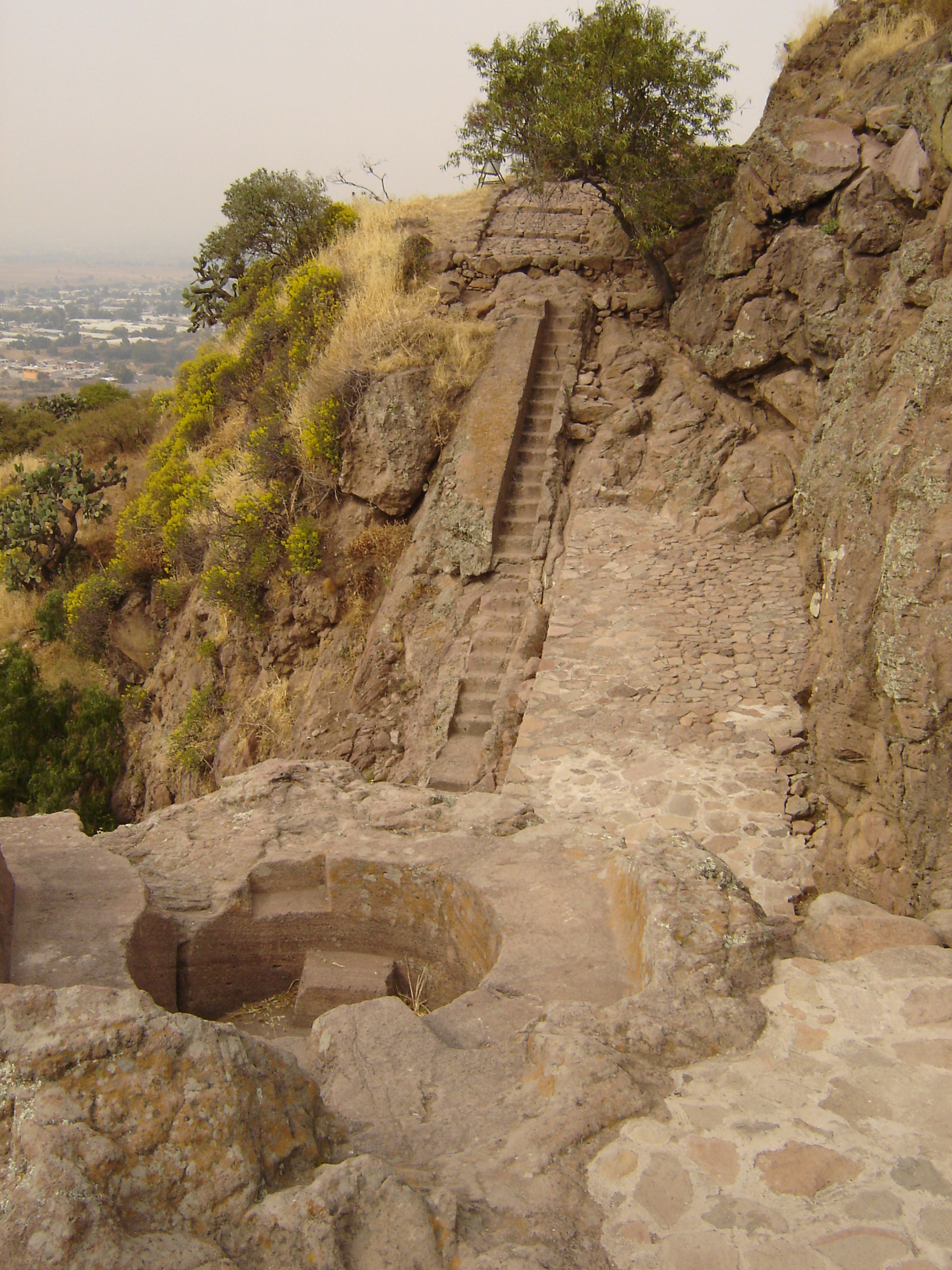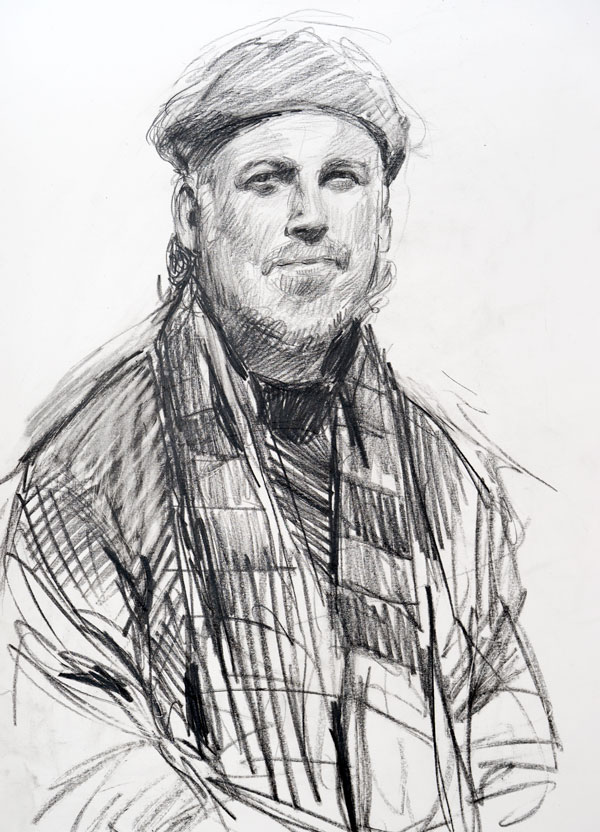|
Acolhua
The Acolhua are a Mesoamerican people who arrived in the Valley of Mexico in or around the year 1200 CE. The Acolhua were a sister culture of the Aztecs (or Mexica) as well as the Tepanec, Chalca, Xochimilca and others. The most important political entity in ancient Mesoamerica was the Triple Alliance (Nahuatl, ''excan tlatoloyan''), founded in 1428 when the rulers of Tenochtitlan, Tetzcoco, and Tlacopan formed an alliance that replaced the Tepanec Empire of Azcapotzalco and eventually integrated into a single polity the most developed regions of western Mesoamerica. Because of the predominance of Tenochtitlan, it has also been called the Mexica, Aztec, or Tenochca Empire. It came to an end with the Spanish conquest of 1521. Each of the three allied kings led a group of lesser kingdoms that coincided with the three major ethnic components and political powers of previous times: the Colhuas, the Acolhua-Chichimecs, and the Tepanecs. The domain of Tenochtitlan was the southern pa ... [...More Info...] [...Related Items...] OR: [Wikipedia] [Google] [Baidu] |
Acolhuacan
Acolhuacan or Aculhuacan (Nahuatl: ''ācōlhuahcān''; ) was a pre-Columbian province in the east of the Valley of Mexico, inhabited by the Acolhua. Its capital was initially Coatlichan, but this settlement was eventually eclipsed in importance by Texcoco (Tetzcoco). In some sources, the name "Acolhuacan" was also used to refer to a city within the larger Acolhuacan province (e.g., in the Codex Mendoza, folio 21v). Frances Berdan and Patricia Rieff Anawalt argue that it was likely Texcoco, Acolman Acolman de Nezahualcóyotl is a town and municipality located in the northern part of State of Mexico, part of the Greater Mexico City area, just north of the city proper. According to myth, the first man was placed here after being taken out of ..., or Coatlichan, with the latter two being "the most likely prospects." Additional scholars largely agree that Acolhuacan was likely another name for Coatlichan.Lee (2009): p. 78, 90. Notes References * * * * * * Historical regions [...More Info...] [...Related Items...] OR: [Wikipedia] [Google] [Baidu] |
Aztecs
The Aztecs () were a Mesoamerican culture that flourished in central Mexico in the post-classic period from 1300 to 1521. The Aztec people included different Indigenous peoples of Mexico, ethnic groups of central Mexico, particularly those groups who spoke the Nahuatl, Nahuatl language and who dominated large parts of Mesoamerica from the 14th to the 16th centuries. Aztec culture was organized into city-states (''altepetl''), some of which joined to form alliances, political confederations, or empires. The Aztec Empire was a confederation of three city-states established in 1427: Tenochtitlan, city-state of the Mexica or Tenochca; Texcoco (altepetl), Texcoco; and Tlacopan, previously part of the Tepanec empire, whose dominant power was Azcapotzalco (altepetl), Azcapotzalco. Although the term Aztecs is often narrowly restricted to the Mexica of Tenochtitlan, it is also broadly used to refer to Nahuas, Nahua polities or peoples of central Pre-Columbian Mexico, Mexico in the preh ... [...More Info...] [...Related Items...] OR: [Wikipedia] [Google] [Baidu] |
Texcoco (altepetl)
Tetzcoco (Classical Nahuatl: ''Tetzco(h)co'' ) was a major Acolhua altepetl (city-state) in the central Mexican plateau region of Mesoamerica during the Late Postclassic period of pre-Columbian Mesoamerican chronology. It was situated on the eastern bank of Lake Texcoco in the Valley of Mexico, to the northeast of the Aztec capital, Tenochtitlan. The site of pre-Columbian Tetzcoco is now subsumed by the modern Mexican ''municipio'' of Texcoco and its major settlement, the city formally known as Texcoco de Mora. It also lies within the greater metropolitan area of Mexico City. Pre-Columbian Tetzcoco is most noted for its membership in the Aztec Triple Alliance. At the time of the Spanish conquest of the Aztec Empire, it was one of the largest and most prestigious cities in central Mexico, second only to the Aztec capital, Tenochtitlan. A survey of Mesoamerican cities estimated that pre-conquest Tetzcoco had a population of 24,000+ and occupied an area of 450 hectares. The ... [...More Info...] [...Related Items...] OR: [Wikipedia] [Google] [Baidu] |
Tepanec
The Tepanecs or Tepaneca are a Mesoamerican people who arrived in the Valley of Mexico in the late 12th or early 13th centuries.The dates vary by source, including 1152 CE in Anales de Tlatelolco, 1210 from Chimalpahin, and 1226 from Ixtlilxochitl (as interpreted by Smith, p. 169). The Tepanec were a sister culture of the Aztecs (or Mexica) as well as the Acolhua and others—these tribes spoke the Nahuatl language and shared the same general pantheon, with local and tribal variations. The name "Tepanecas" is a derivative term, corresponding to their original mythical city, Tepanohuayan (the passing by), also known as Tepano. Ideographically it is represented as a stone, for its etymology comes from ''Tepan'' (over the stones). Their conquered territories received the name ''Tepanecapan'' (land of the tepanecas) (lit. "over the tepanecas"). Reputedly welcomed to the Valley of Mexico by the semi-legendary Chichimec ruler Xolotl, the Tepanecs settled on the west shores of Lake T ... [...More Info...] [...Related Items...] OR: [Wikipedia] [Google] [Baidu] |
Techotlalatzin
Techotlalatzin (or Techotlala, removing the Classical Nahuatl honorific ''-tzin'') was the ruler (''tlatoani'') of the pre-Columbian Mesoamerican Mesoamerica is a historical region and cultural area in southern North America and most of Central America. It extends from approximately central Mexico through Belize, Guatemala, El Salvador, Honduras, Nicaragua, and northern Costa Rica. Withi ... city-state of Texcoco (altepetl), Texcoco from 1357 or 1377 until his death in 1409. Techotlalatzin was the first ruler of the Acolhua who actively adopted the prevailing culture of the Valley of Mexico, including the Classical Nahuatl, Nahuatl language.Davies (1980, p.129); Smith (1984, p.170). Smith himself further references Fernando de Alva Cortés Ixtlilxochitl, Juan Bautista de Pomar, and Chimalpahin. The son of Quinatzin, Techotlalatzin was able to build a small Acolhua-dominated domain on the eastern side of Lake Texcoco, although this domain was apparently under the influence or ... [...More Info...] [...Related Items...] OR: [Wikipedia] [Google] [Baidu] |
Nahua People
The Nahuas () are a group of the indigenous people of Mexico, El Salvador, Guatemala, Honduras, and Nicaragua. They comprise the largest indigenous group in Mexico and second largest in El Salvador. The Mexica ( Aztecs) were of Nahua ethnicity, and the Toltecs are often thought to have been as well, though in the pre-Columbian period Nahuas were subdivided into many groups that did not necessarily share a common identity. Their Nahuan languages, or Nahuatl, consist of many variants, several of which are mutually unintelligible. About 1.5 million Nahuas speak Nahuatl and another million speak only Spanish. Fewer than 1,000 native speakers of Nahuatl remain in El Salvador. It is suggested that the Nahua peoples originated near Aridoamerica, in regions of the present day Mexican states of Durango and Nayarit or the Bajío region. They split off from the other Uto-Aztecan speaking peoples and migrated into central Mexico around 500 CE. The Nahua then settled in and around the ... [...More Info...] [...Related Items...] OR: [Wikipedia] [Google] [Baidu] |
Mesoamerica
Mesoamerica is a historical region and cultural area in southern North America and most of Central America. It extends from approximately central Mexico through Belize, Guatemala, El Salvador, Honduras, Nicaragua, and northern Costa Rica. Within this region pre-Columbian societies flourished for more than 3,000 years before the Spanish colonization of the Americas. Mesoamerica was the site of two of the most profound historical transformations in world history: primary urban generation, and the formation of New World cultures out of the long encounters among indigenous, European, African and Asian cultures. In the 16th century, Eurasian diseases such as smallpox and measles, which were endemic among the colonists but new to North America, caused the deaths of upwards of 90% of the indigenous people, resulting in great losses to their societies and cultures. Mesoamerica is one of the five areas in the world where ancient civilization arose independently (see cradle of civ ... [...More Info...] [...Related Items...] OR: [Wikipedia] [Google] [Baidu] |
Valley Of Mexico
The Valley of Mexico ( es, Valle de México) is a highlands plateau in central Mexico roughly coterminous with present-day Mexico City and the eastern half of the State of Mexico. Surrounded by mountains and volcanoes, the Valley of Mexico was a centre for several pre-Columbian civilizations, including Teotihuacan, the Toltec, and the Aztec. The ancient Aztec term ('Land Between the Waters') and the phrase Basin of Mexico are both used at times to refer to the Valley of Mexico. The Basin of Mexico became a well known site that epitomized the scene of early Classic Mesoamerican cultural development as well. The Valley of Mexico is located in the Trans-Mexican Volcanic Belt. The valley contains most of the Greater Mexico City, Mexico City Metropolitan Area, as well as parts of the State of Mexico, Hidalgo (state), Hidalgo, Tlaxcala, and Puebla. The Basin of Mexico covers approximately in the NNE-SSW direction with length to width dimensions of approximately to The Valley of ... [...More Info...] [...Related Items...] OR: [Wikipedia] [Google] [Baidu] |
Common Era
Common Era (CE) and Before the Common Era (BCE) are year notations for the Gregorian calendar (and its predecessor, the Julian calendar), the world's most widely used calendar era. Common Era and Before the Common Era are alternatives to the original Anno Domini (AD) and Before Christ (BC) notations used for the same calendar era. The two notation systems are numerically equivalent: " CE" and "AD " each describe the current year; "400 BCE" and "400 BC" are the same year. The expression traces back to 1615, when it first appeared in a book by Johannes Kepler as the la, annus aerae nostrae vulgaris (), and to 1635 in English as " Vulgar Era". The term "Common Era" can be found in English as early as 1708, and became more widely used in the mid-19th century by Jewish religious scholars. Since the later 20th century, BCE and CE have become popular in academic and scientific publications because BCE and CE are religiously neutral terms. They are used by others who wish to be sensit ... [...More Info...] [...Related Items...] OR: [Wikipedia] [Google] [Baidu] |
David Carrasco
Davíd Lee Carrasco is an American academic historian of religion, anthropologist, and Mesoamericanist scholar. As of 2001 he holds the inaugural appointment as Neil L. Rudenstine Professor of Latin America Studies at the Harvard Divinity School, in a joint appointment with the Faculty of Arts and Sciences' Department of Anthropology at Harvard University. Carrasco previously taught at the University of Colorado, Boulder and Princeton University and is known for his research and publications on Mesoamerican religion and history, his public speaking as well as wider contributions within Latin American studies and Latino/a studies. He has made statements about Latino contributions to US democracy in public dialogues with Cornel West, Toni Morrison, and Samuel P. Huntington. His work is known primarily for his writings on the ways human societies orient themselves with sacred places. Early life and education Carrasco descends from several generations of El Paso, Texas educators. ... [...More Info...] [...Related Items...] OR: [Wikipedia] [Google] [Baidu] |
Otomi Language
Otomi (; ) is an Oto-Pamean languages, Oto-Pamean language family spoken by approximately 240,000 indigenous Otomi people in the Mexican Plateau, central ''altiplano'' region of Mexico. Otomi consists of several closely related languages, many of which are not mutually intelligible. The word ''Hñähñu'' has been proposed as an endonym, but since it represents the usage of a single dialect, it has not gained wide currency. Linguists have classified the modern dialects into three dialect areas: the Northwestern dialects are spoken in Querétaro, Hidalgo (state), Hidalgo and Guanajuato; the Southwestern dialects are spoken in the Mexico (state), State of Mexico; and the Eastern dialects are spoken in the highlands of Veracruz, Puebla, and eastern Hidalgo and villages in Tlaxcala and Mexico states. Like all other Oto-Manguean languages, Otomi is a tonal language, and most varieties distinguish three tones. Nouns are marked only for possessor; the plural number is marked with a d ... [...More Info...] [...Related Items...] OR: [Wikipedia] [Google] [Baidu] |





